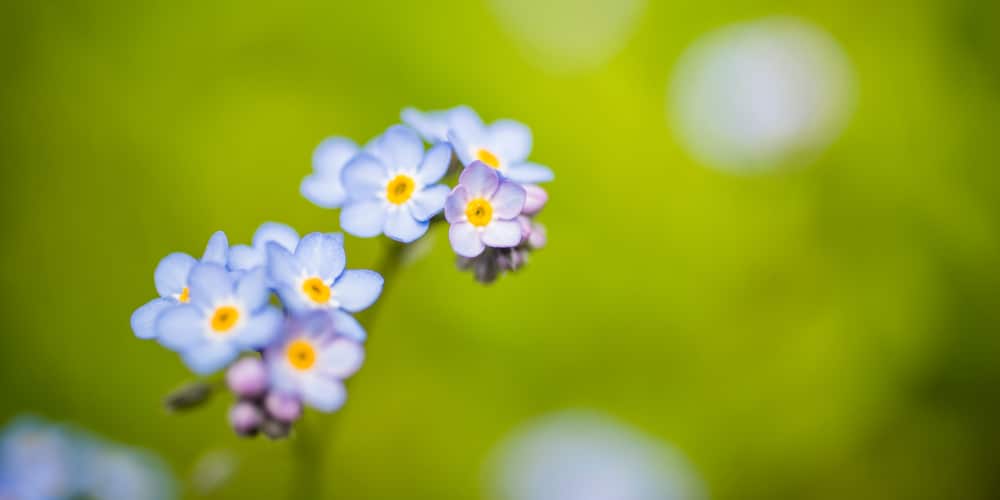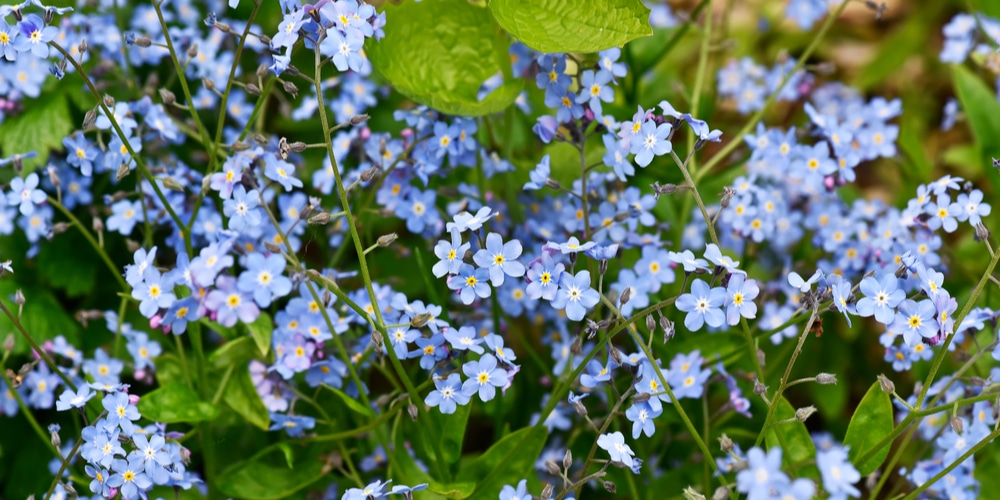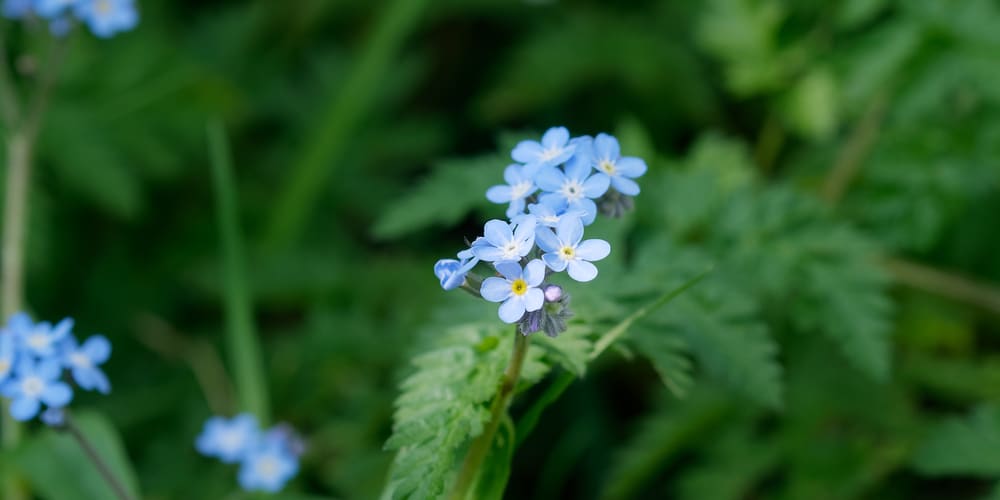If you need to fill some bare spots in your garden, adding ground covers might be your perfect solution. Among the wide selection of plants that might work, scorpion grasses, also known as forget-me-nots, are the ideal option for people looking for hardy and versatile plants.
But how can you grow this wildflower in your yard? And what should you know to get the most how of it?
Well, if you would like to find answers to these questions and get to learn more about this versatile and gorgeous ground cover, keep reading. Here, you’ll find everything you need to know about it.
| Botanical Name | Mysotis verna |
| Common Name | Forget-me-not, Scorpion Grass |
| Plant Type | Annual |
| Flower Color | These plants’ flowers are tiny but numerous. They are usually blue with yellow centers, but you can also find them in white and pink. |
| Size When Mature | It can grow up to one foot tall and have a similar spread. However, it usually stays smaller. |
| Bloom Time | Mid-spring |
| Sun Requirements | Full to partial sun |
| USDA Hardiness Zones | Between 3 and 8 |
| Soil PH Range | 6.0 to 7.0 |
| Soil Type | Well-draining and moist |
| Water Needs | Medium: these plants love moisture but are susceptible to root rot and other diseases in wet conditions |
| Native Area | Europe and Asia |
What you Need to Know About Scorpion Grasses
Scorpion grasses are versatile ground covers whose name comes from how the flower clusters are bent over. Part of the Boraginaceae family, these plants are native to Europe and Asia.
Today, they are better known as forget-me-nots. These plants can lay dormant for up to thirty years and bloom at their discretion. Also, you may never know if you’ll get them the following season. But then, you might notice their blooms suddenly.
So, you shouldn’t forget about scorpion grasses! Even if they might not look healthy, you might be surprised to see them returning to life the following season. And when these ground covers feel the soil conditions are ideal for germination, they will reward you with plenty of colorful blooms!
The flowering season is in mid-spring and lasts about two months. While its blooms are often blue, they might also occur in white and pink.
If you have kids or pets running around your garden, you don’t have to worry about them munching on these plants. Scorpion grasses are nontoxic to humans and animals!
How to Care for Scorpion Grasses
Growing scorpion grasses isn’t anything out of this world. However, you will have to know what these plants need to ensure abundant blooms. In these sections, you’ll find everything you need to know!
Light
You can grow scorpion grasses under the full sun or partial shade. But keep in mind that the more sun these plants receive, the more water they will need.
Water and Soil Needs
To get the most out of your forget-me-nots, add them to well-draining substrates. To increase water retention, consider adding a layer of compost or manure.
Mulching around your plant will improve drainage and regulate the soil temperature, which might come in handy if you live in a hot area. Keep these plants moist for better blooms. Also, consider doing a pH test: Scorpion grasses do best in levels between 6.0 and 7.0.
Temperature Requirements
Scorpion grasses adapt to various climates. They tolerate heat and cold but aren’t recommended for areas with hot and humid summers due to their susceptibility to powdery mildew.
This plant’s aggressive reproduction means that you’ll be able to enjoy these plants for several years (unless you decide to suppress them) in different regions. Scorpion grasses are winter hardy above USDA hardiness zone 3.
Fertilizer
While fertilizer isn’t necessary, applying an all-purpose product will boost growth and ensure your plants get all they need to thrive.
Common Diseases
These plants are tolerant of most pests and diseases. However, they are susceptible to powdery mildew infections. Avoid leaving them in soggy soil for too long to prevent issues.
Scorpion Grass Propagation
Scorpion grass is ideal ground-covers: these wildflowers self-seed in most settings and don’t require much attention from your side. The plants are annual but beware: they are invasive in some parts of the country, including the Midwest. To control this plant’s spread, deadhead blooms and remove seeds!
Propagating these plants isn’t a challenging task. You can divide them in the early spring or follow a stem cutting procedure in the summer. However, you will have much better results growing these plants from seeds!
Related Article: Grass Like Plants with Purple Flowers


